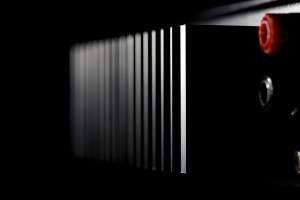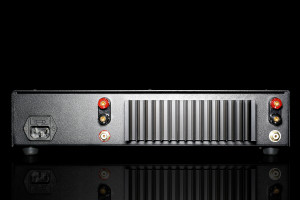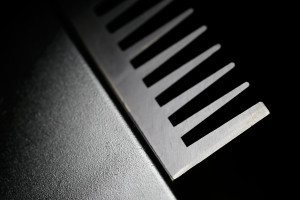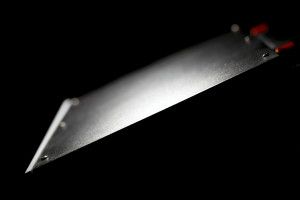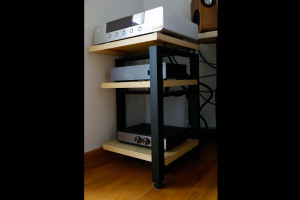Picture an unbelievably good sounding amplifier, which is built to last, Swiss-made, small and of non-DIY sort, yet sold for 20% of expected retail price or less. The so-called common and not sixth sense kicks in. What kind of a smart trickery is this, one wonders. Where’s the trade-off as there obviously has to be one? But what if the real deal is on the table this time? What if it’s more about smart politics and clever, sophisticated circuitry above all else? Would you be a believer then? Would you give such product a go? If your answer is still a big fat ‘no’, let me change this mindset. The JOB Electronics Job 225 stereo power amplifier has arrived and it’s a beast. Enjoy.
Introduction
Let’s kick it off with a story. An unknown manufacturer has a product ready, let’s give it a name to make it properly personal. Meet Gizmo, an amplifier/DAC/preamplifier/transport/whatever. Gizmo was in development for quite a while, two or three years have passed like it was nothing. Several people were heavily involved in order for this product to finally see the daylight. Let’s add that individuals of unknown fame and with no wealthy legacy, which makes Gizmo’s start even harder. Now it is ready to earn some dough for its parents as it has to. That’s the main goal as costs were generated in order for Gizmo to be born. Therefore its first steps are anything but easy and once a big R&D debit on its account is taken into consideration, things are even more grim for our newcomer. Yes, listening pleasure delivery is mentioned somewhere, Gizmo can provide that as well. But what doesn’t make money, sadly doesn’t make much sense in our brutal world. Now picture a pricey nurse who helps Gizmo past tiresome birth, which translates to PR/marketing staff and actions. These are additional cost generators obviously. Once all that is clear, time to let our bird out of the nest.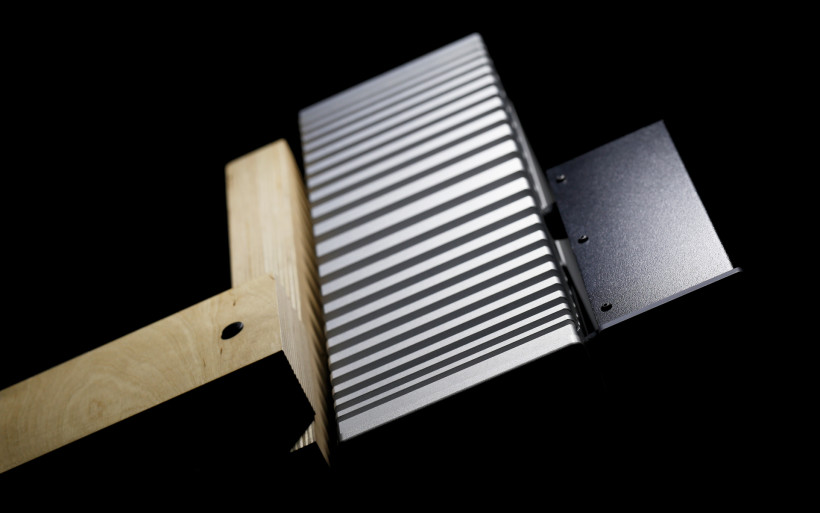 Gizmo is a great performer. It can sing, dance and win a bar fight when needed. Helluva kid. And it’s pretty, that’s a fact. CNC-machined fancy enclosure swallowed about half of its manufacturing cost, but… it’s a looker nonetheless. Now Gizmo is sent to a distributor. The man himself looks at it and says that he’s interested. That’s grand, eh? Well, there are some obstacles, let’s calculate. Said businessman wants 50% off the retail price or else his interest is gone completely. That’s understandable, he has mouths to feed and all that. And let’s not forget about resellers’ network he already has. These individuals help him to push the goods to the people directly, therefore they have to earn as well. Gizmo’s parents can’t sell their creation below manufacturing cost, yet are willing to cooperate and a figure on its price tag goes up in the process. Finally the deal is done and everyone’s happy. But since Gizmo looks unusually hot and is able to sing unusually nice, these two traits instantly picked by a distributor are the reason why this case isn’t done yet. The idea of bumping the price even higher in order to attract certain type of a customer is on the table. Everyone gets even bigger cut in the end, no? After that is done, some time passes and Gizmo is for the taking in several places. It can be yours if you can afford it. And since it’s awfully pricey and has a lot of well-established competition, not many people actually care about Gizmo. Such a potential, it might go to waste. But we’ll see, time will tell.
Gizmo is a great performer. It can sing, dance and win a bar fight when needed. Helluva kid. And it’s pretty, that’s a fact. CNC-machined fancy enclosure swallowed about half of its manufacturing cost, but… it’s a looker nonetheless. Now Gizmo is sent to a distributor. The man himself looks at it and says that he’s interested. That’s grand, eh? Well, there are some obstacles, let’s calculate. Said businessman wants 50% off the retail price or else his interest is gone completely. That’s understandable, he has mouths to feed and all that. And let’s not forget about resellers’ network he already has. These individuals help him to push the goods to the people directly, therefore they have to earn as well. Gizmo’s parents can’t sell their creation below manufacturing cost, yet are willing to cooperate and a figure on its price tag goes up in the process. Finally the deal is done and everyone’s happy. But since Gizmo looks unusually hot and is able to sing unusually nice, these two traits instantly picked by a distributor are the reason why this case isn’t done yet. The idea of bumping the price even higher in order to attract certain type of a customer is on the table. Everyone gets even bigger cut in the end, no? After that is done, some time passes and Gizmo is for the taking in several places. It can be yours if you can afford it. And since it’s awfully pricey and has a lot of well-established competition, not many people actually care about Gizmo. Such a potential, it might go to waste. But we’ll see, time will tell. Now ask yourself what will happen over the next year or two. Will Gizmo turn out to be a product successful enough to put money into a manufacturer’s, a distributor’s and a reseller’s pockets? Perhaps it’ll at least generate the initial cost return? Or will it become worldwide famous and make all of it’s family wealthy people? Maybe on the contrary, it’ll pass completely unseen? And how many Gizmos will be out there in happy audiophiles’ homes?
Now ask yourself what will happen over the next year or two. Will Gizmo turn out to be a product successful enough to put money into a manufacturer’s, a distributor’s and a reseller’s pockets? Perhaps it’ll at least generate the initial cost return? Or will it become worldwide famous and make all of it’s family wealthy people? Maybe on the contrary, it’ll pass completely unseen? And how many Gizmos will be out there in happy audiophiles’ homes?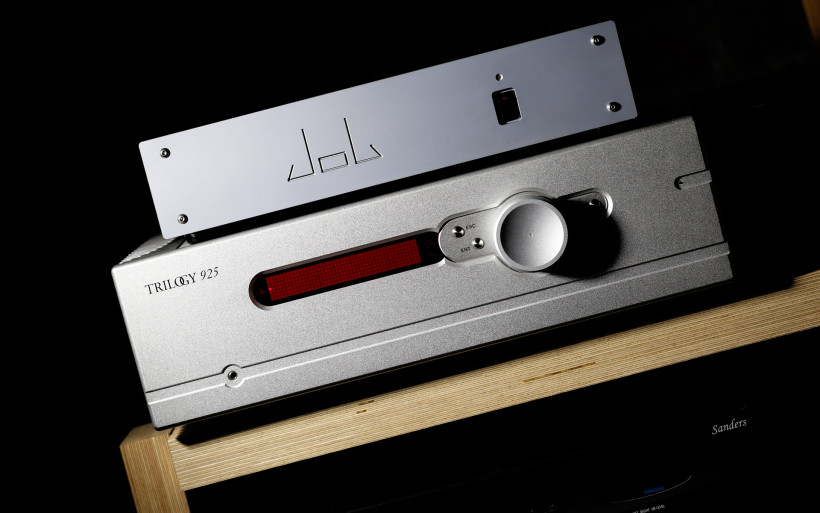 The story above translates to a small manufacture with a promising product and its shy beginnings. Although a bit grim and unfinished, this writing can have a perfectly happy ending if a proper word of mouth is spread, namely the press is keen and a distributor handles marketing decently. But this scenario can go in several directions and this is neither time nor a place to dive into possible outcomes. My goal was to point out what happens with the prices once distribution comes into play, how the numbers actually change to a customer’s disadvantage. He pays not only for a product, but he also feeds the whole, often very tall ladder of people. It is what it is. Of course distributors and resellers do their jobs; they provide necessary support, care about local press and all that. Yet at user’s end it’s never about the product’s cost alone and it’s a known fact, related to e.g. smartphones, AGD or RTV in general, not only audio. But what if this doesn’t have to be the case each and every time? What if one can be a happy user of a directly sold product, that subjectively is not as pretty or flashy as Gizmo, but it surely performs on the same or even higher level? That’s the case with JOB Electronics Job 225. This machine isn’t Gizmo, it opposes it and with a bang rarely this loud while doing so. Please read on to know why.
The story above translates to a small manufacture with a promising product and its shy beginnings. Although a bit grim and unfinished, this writing can have a perfectly happy ending if a proper word of mouth is spread, namely the press is keen and a distributor handles marketing decently. But this scenario can go in several directions and this is neither time nor a place to dive into possible outcomes. My goal was to point out what happens with the prices once distribution comes into play, how the numbers actually change to a customer’s disadvantage. He pays not only for a product, but he also feeds the whole, often very tall ladder of people. It is what it is. Of course distributors and resellers do their jobs; they provide necessary support, care about local press and all that. Yet at user’s end it’s never about the product’s cost alone and it’s a known fact, related to e.g. smartphones, AGD or RTV in general, not only audio. But what if this doesn’t have to be the case each and every time? What if one can be a happy user of a directly sold product, that subjectively is not as pretty or flashy as Gizmo, but it surely performs on the same or even higher level? That’s the case with JOB Electronics Job 225. This machine isn’t Gizmo, it opposes it and with a bang rarely this loud while doing so. Please read on to know why.
Build
Direct sales, that’s the answer. At least partially, but let’s get this matter out of the way right off the bat. When a manufacturer decides to handle its goods in such fashion, a payroll gets shortened by a lot, which then greatly influences the final price, down it goes in the process. JOB Electronics Job 225 amplifier can be had for as little as $1’699. But if it’d be available via regular channels, its asking would be at least twice that. But this journalist honestly doubts it and is keen to think that $6’000 or above is said item’s realistic value. Down below I’ll explain why so, but for now let’s get back on the main track. To push products directly means that a company’s representative has to handle marketing/PR actions. To be perfectly honest, a Job 225 amplifier got some important press coverage and that’s the very reason why yours truly got seriously interested. For a ‘while’ this product was sold in the USA exclusively… via Amazon. JOB Electronics Inc. is the American company, Job 225 model’s creators wanted to check what will happen in their own playground at first. They did, said virtual store is off the table these days and said deck is now globally available. But what’s the main reason behind why this item gained lots of recognition and reviews this favourable? What’s the secret sauce, as there obviously is one? Ha, here it gets really interesting. JOB Electronics Inc. belongs to the A.I.H.C. Group. Six brands in total are visible on its official site, one is already known. The rest is as follows; AudioNetworks, Metis, Sylans, Stellavox and… Goldmund. Yes, this pricey as king Midas himself, Swiss Goldmund. If at this very moment one wonders whether there are some correlations between aforementioned brands, yes, there are. And it goes much deeper than one might think. First of all, I was utterly surprised after courier’s delivery as it turned out that the package was sent from Switzerland, Digital Audio SA factory to be exact. That’s the place where Goldmund products are made. So picture a $1’699 stereo power amplifier, which is made in the most expensive country in Europe and not China as some of you might suspect. Ain’t that something? And here it gets even more interesting as JOB Electronics Inc. shares technology with Goldmund, a particular schematic which is said to be more than four decades old yet constantly improved. 40 years of R&D? It has to sound good, otherwise it wouldn’t have been used, no? Said information are to be found in Srajan’s Job 225 review published on his 6moons.com site. Obviously the only viable way to know if any of this is true is to have a listen, form an individual opinion and we’ll get to that in a minute. But still, there’s more.
JOB Electronics Inc. belongs to the A.I.H.C. Group. Six brands in total are visible on its official site, one is already known. The rest is as follows; AudioNetworks, Metis, Sylans, Stellavox and… Goldmund. Yes, this pricey as king Midas himself, Swiss Goldmund. If at this very moment one wonders whether there are some correlations between aforementioned brands, yes, there are. And it goes much deeper than one might think. First of all, I was utterly surprised after courier’s delivery as it turned out that the package was sent from Switzerland, Digital Audio SA factory to be exact. That’s the place where Goldmund products are made. So picture a $1’699 stereo power amplifier, which is made in the most expensive country in Europe and not China as some of you might suspect. Ain’t that something? And here it gets even more interesting as JOB Electronics Inc. shares technology with Goldmund, a particular schematic which is said to be more than four decades old yet constantly improved. 40 years of R&D? It has to sound good, otherwise it wouldn’t have been used, no? Said information are to be found in Srajan’s Job 225 review published on his 6moons.com site. Obviously the only viable way to know if any of this is true is to have a listen, form an individual opinion and we’ll get to that in a minute. But still, there’s more. At this point the Job 225 story is rather unusual and hopefully highly entertaining. The sheer idea of obtaining a Ferrari for Toyota’s coin is the outcome. Yet is it really a Ferrari type of a car we’re dealing with here? Or is it solely the engine that connects the two and nothing past that? After cutting through a typical cardboard box and seeing its innards, a sensation of an exquisite purchase isn’t there. On the contrary in fact. One gets a Job 225 amplifier, ordinary power cord, a short manual with some specs and… that’s it. No certificate of authenticity, velour pouches, fancy remote control, nothing. If one isn’t into vanilla flavour, in Job 225’s case it’s high time to give it another try. But, to be completely honest, all those small things influence the price and let us remind ourselves that a $1’699 product with a supposedly amazing circuitry is on the table. Besides, what else could one want with this type of a device?
At this point the Job 225 story is rather unusual and hopefully highly entertaining. The sheer idea of obtaining a Ferrari for Toyota’s coin is the outcome. Yet is it really a Ferrari type of a car we’re dealing with here? Or is it solely the engine that connects the two and nothing past that? After cutting through a typical cardboard box and seeing its innards, a sensation of an exquisite purchase isn’t there. On the contrary in fact. One gets a Job 225 amplifier, ordinary power cord, a short manual with some specs and… that’s it. No certificate of authenticity, velour pouches, fancy remote control, nothing. If one isn’t into vanilla flavour, in Job 225’s case it’s high time to give it another try. But, to be completely honest, all those small things influence the price and let us remind ourselves that a $1’699 product with a supposedly amazing circuitry is on the table. Besides, what else could one want with this type of a device? The Job 225 is suspiciously small. It measures mere 36 x 24,5 x 8,5 cm (W x D x H) and weighs 7 kilograms. Class D anyone? Nope, not really, our Swiss affair is of class AB sort. There’s a clean aluminium gunmetal bar on its front, which sports finely engraved ‘Job’ writing, whereas an on/off switch and an orange diode sit a bit to the right. Four screws are visible there too. The enclosure is an U-shaped steel cover, black all the way. On the product’s back there’s a rather large radiator, it can get really hot. One RCA input and a pair of speaker terminals per channel seal the deal. Four rubber feet are to be found on our device’s bottom, along with a sticker. Usual suspects are seen there; a serial number, power draw rated at 300W, CE and ‘Swiss made’ signs and so on. But what’s the most surprising is Goldmund’s logo found there. The Job 225’s build quality is very good. The device looks as plain as it gets, the very first glimpse suggests its DIY roots. But after closer examination, the impression of a product too well-made to belong to such group is present. It’s said that enclosure can devour a fair chunk of manufacturing cost. But the Job 225 delivered to my very hands screams; “Sir! I’m about innards, specs and performance, not the looks!”. Because of this cost effective approach, said deck can be bought for pennies, which clearly benefits everyone deeply into affordable audio. And subjectively it looks really good. The only gripe on this journalist’s end? Our deck’s black paint job rather easily and quickly peels off to reveal its silvery colouring. But this very minor issue aside, I honestly couldn’t find anything else to bash.
The Job 225 is suspiciously small. It measures mere 36 x 24,5 x 8,5 cm (W x D x H) and weighs 7 kilograms. Class D anyone? Nope, not really, our Swiss affair is of class AB sort. There’s a clean aluminium gunmetal bar on its front, which sports finely engraved ‘Job’ writing, whereas an on/off switch and an orange diode sit a bit to the right. Four screws are visible there too. The enclosure is an U-shaped steel cover, black all the way. On the product’s back there’s a rather large radiator, it can get really hot. One RCA input and a pair of speaker terminals per channel seal the deal. Four rubber feet are to be found on our device’s bottom, along with a sticker. Usual suspects are seen there; a serial number, power draw rated at 300W, CE and ‘Swiss made’ signs and so on. But what’s the most surprising is Goldmund’s logo found there. The Job 225’s build quality is very good. The device looks as plain as it gets, the very first glimpse suggests its DIY roots. But after closer examination, the impression of a product too well-made to belong to such group is present. It’s said that enclosure can devour a fair chunk of manufacturing cost. But the Job 225 delivered to my very hands screams; “Sir! I’m about innards, specs and performance, not the looks!”. Because of this cost effective approach, said deck can be bought for pennies, which clearly benefits everyone deeply into affordable audio. And subjectively it looks really good. The only gripe on this journalist’s end? Our deck’s black paint job rather easily and quickly peels off to reveal its silvery colouring. But this very minor issue aside, I honestly couldn’t find anything else to bash. Specs wise, the Job 225 is impressive. This class AB deck is of ultra wide bandwidth breed, picture +/- 0.03dB in 20 Hz – 20 kHz range and – 3dB in 10 Hz – 200 kHz range when unloaded. Output power into 8 ohms is 2 x 125W, gain is set at 35, damping factor (1 kHz / 8 ohms) is 200 and slew rate is 75 V/us. Unloaded < 0.04% of THD+N in 20 Hz – 20 000 kHz range at 20 Vrms and < 0.006% of IMD at 20 Vrms closes this paragraph. No innards this time, yours truly is the culprit. The device had to go to another reviewer, but page three of Srajan’s Job 225 review will be helpful in that regard.
Specs wise, the Job 225 is impressive. This class AB deck is of ultra wide bandwidth breed, picture +/- 0.03dB in 20 Hz – 20 kHz range and – 3dB in 10 Hz – 200 kHz range when unloaded. Output power into 8 ohms is 2 x 125W, gain is set at 35, damping factor (1 kHz / 8 ohms) is 200 and slew rate is 75 V/us. Unloaded < 0.04% of THD+N in 20 Hz – 20 000 kHz range at 20 Vrms and < 0.006% of IMD at 20 Vrms closes this paragraph. No innards this time, yours truly is the culprit. The device had to go to another reviewer, but page three of Srajan’s Job 225 review will be helpful in that regard.
Sound
In order to have this review properly informational, several things had to be done with Job 225. In the very beginning, said deck went to this reviewer’s home setup. A pair of Boenicke W5 monitors, AMR DP-777 SE d/a converter and Denon PMA-1510AE were already there. This rig works as a nearfield setup and Swiss W5 model does a really amazing job there. Denon’s integrated is obviously much more affordable than the Job 225, but this adventure had to start somewhere. The point of this exercise was to find out what will happen once a big and mainstream AB class representative will step down and a smaller box of the same breed will take its place. Once this matter was done, the Job 225 was moved to a bigger room. Boenicke Audio W8 floorstanders, LampizatOr Golden Gate, Trilogy 925 and Sanders Sound Systems preamplifier + amplifier combo completed the picture. Every deck used in the main listening room is times more expensive than the Job 225. But since it’s said that this is such a beast, a competition of this pricey sort works like a charm to evaluate that. Without further ado, here’s what’s happened.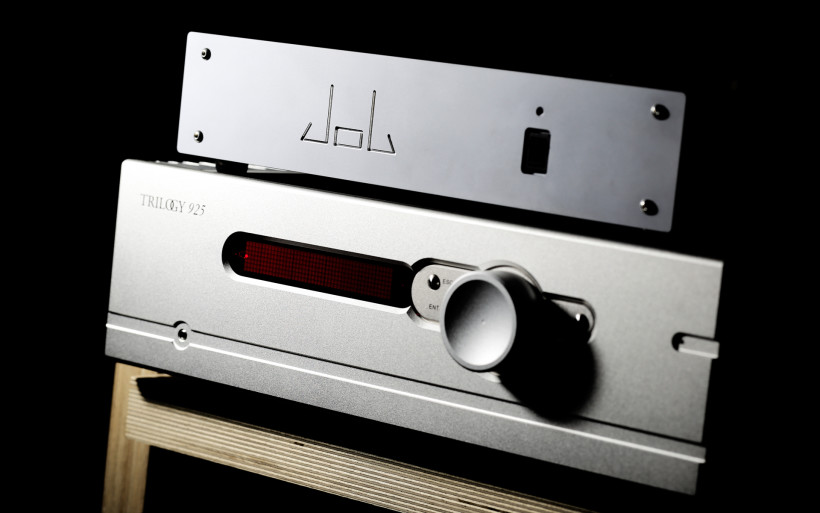 In the nearfield setup, the Job 225 was regulated by DP-777SE’s on-board volume control. It could be heard in an instant, how huge advantage this Swiss amplifier holds over Denon used on a daily basis. Audible differences occurred in nearly every aspect possible. That’s a shocker really, as scenario this intense is very rarely heard. Frequently a change of pace, mood, density and so on follows, but still a change and not an improvement. Some trade-offs take place as well, one device might elevate feistiness yet its density might be affected in an unfavorable way, or the other way around. You get something, something is taken in return, that’s how it usually works. But not this time. Once the PMA-1510AE stepped down and the Job 225 jumped instead, the so-called ‘WOW’ effect was present. The very first audible thing was how fast the sound became. W5 are no slouch at all with Denon’s integrated, yet Swiss amplifier showed clearly how much faster these can go. Next there was a significant soundstage change. It grew bigger, especially in terms of its width, but additional layers were added as well. To say that the space became much more threedimensional is the most accurate description. The tonal balance remained untouched, yet it was obviously noticeable that the outcome became much more transparent and effortless overall. The Job 225 was able to easily squeeze out additional details. But all that happened without any cost at all. There was no density or audible frequency loss and as a bonus, with the Job 225 the outcome became much smoother. It’s safe to say that only one product remained on the battlefield after a rather short, mere several days long and one-sided skirmish. This was somewhat expected, but the delta of changes was surprisingly big ant the very first Swiss experience turned out to be not only highly intense, but exceptionally jolly. Denon PMA-1510AE was bland, shallow and not very detailed in comparison. Ah, on top of that most definitely not as refined, not even closely. It was high time to compare our Job 225 magic box to more worthy and much pricier opponents.
In the nearfield setup, the Job 225 was regulated by DP-777SE’s on-board volume control. It could be heard in an instant, how huge advantage this Swiss amplifier holds over Denon used on a daily basis. Audible differences occurred in nearly every aspect possible. That’s a shocker really, as scenario this intense is very rarely heard. Frequently a change of pace, mood, density and so on follows, but still a change and not an improvement. Some trade-offs take place as well, one device might elevate feistiness yet its density might be affected in an unfavorable way, or the other way around. You get something, something is taken in return, that’s how it usually works. But not this time. Once the PMA-1510AE stepped down and the Job 225 jumped instead, the so-called ‘WOW’ effect was present. The very first audible thing was how fast the sound became. W5 are no slouch at all with Denon’s integrated, yet Swiss amplifier showed clearly how much faster these can go. Next there was a significant soundstage change. It grew bigger, especially in terms of its width, but additional layers were added as well. To say that the space became much more threedimensional is the most accurate description. The tonal balance remained untouched, yet it was obviously noticeable that the outcome became much more transparent and effortless overall. The Job 225 was able to easily squeeze out additional details. But all that happened without any cost at all. There was no density or audible frequency loss and as a bonus, with the Job 225 the outcome became much smoother. It’s safe to say that only one product remained on the battlefield after a rather short, mere several days long and one-sided skirmish. This was somewhat expected, but the delta of changes was surprisingly big ant the very first Swiss experience turned out to be not only highly intense, but exceptionally jolly. Denon PMA-1510AE was bland, shallow and not very detailed in comparison. Ah, on top of that most definitely not as refined, not even closely. It was high time to compare our Job 225 magic box to more worthy and much pricier opponents.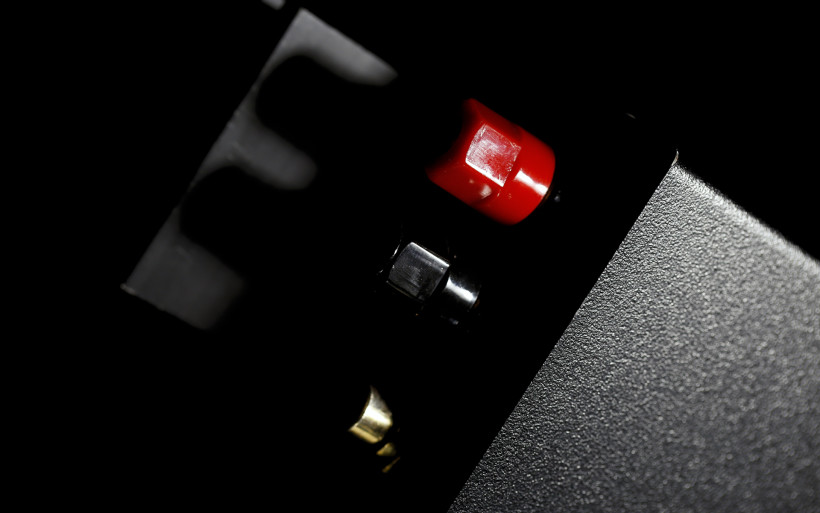 Some casual listening was in order at first, just to properly accommodate to a new toy in the big playground. By casual approach one should understand Lumin T1’s input. This iPad Air controlled device fed the Job 225 directly. Our Swiss champ was then connected to a pair of speakers from the same country, namely Boenicke W8. Why to start with a gun of a calibre this big? The Job 225 is rated at 125 watts into 8 ohms and this spec alone was a reason good enough to give our Swiss combination at least a try. And the outcome? It outgrew this journalist’s initial expectations by a lot. To hear Sven’s W8 model controlled this well is a rarity. Surely that was the most prominent feature. Low extension was both present and punchy whereas the rest of audible FR remained perfectly audible and smooth. This last feature – smoothness – was not only always heard with the Job 225, but also one of the reasons behind why this amplifier turned out to be so special.
Some casual listening was in order at first, just to properly accommodate to a new toy in the big playground. By casual approach one should understand Lumin T1’s input. This iPad Air controlled device fed the Job 225 directly. Our Swiss champ was then connected to a pair of speakers from the same country, namely Boenicke W8. Why to start with a gun of a calibre this big? The Job 225 is rated at 125 watts into 8 ohms and this spec alone was a reason good enough to give our Swiss combination at least a try. And the outcome? It outgrew this journalist’s initial expectations by a lot. To hear Sven’s W8 model controlled this well is a rarity. Surely that was the most prominent feature. Low extension was both present and punchy whereas the rest of audible FR remained perfectly audible and smooth. This last feature – smoothness – was not only always heard with the Job 225, but also one of the reasons behind why this amplifier turned out to be so special.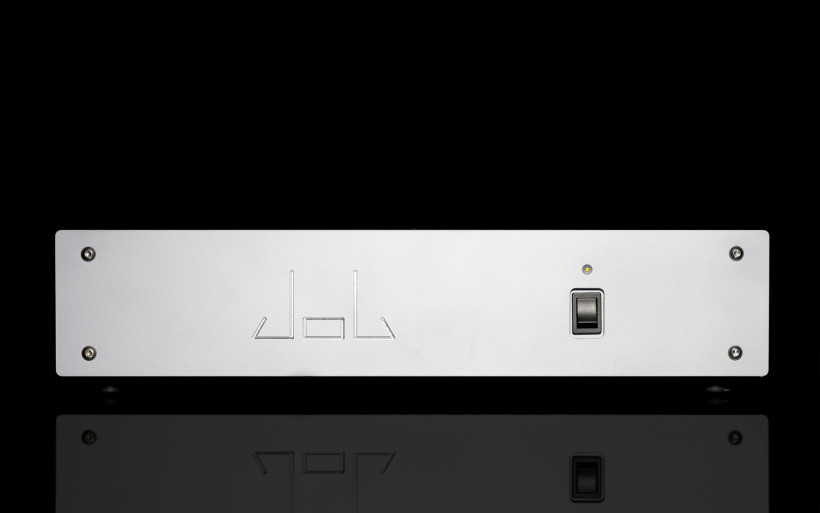 Moving on, Boenicke W8 + Job 225 was a happy marriage overall. The latter was easily able to show the former’s strengths, namely addictively big and deep soundstage, rich and not boomy bass, clarity and so on. Fatigueless and properly contour picture was sketched. But even though the effect was satisfying, W8 sang thinner than usual. Not overly thin, just slightly on the skinny and lit up side. Not as fit as usually, to be honest. It was high time to tweak the setup. The obvious choice was to place Sanders Sound Systems preamplifier past Lumin’s T1 model and before the Job 225. Said alteration turned out to be a bullseye, the outcome got heavier to a point, where any additional muscularity increase would be subjectively of neither excessive nor mandatory value, but ‘just’ additive. This was the case with Boenicke W8 speakers at least. The takeaway is that in this particular setup, the Job 225 turned out to benefit from weigh gain, yet it also remarkably showed how transparent it is. To hear American preamplifier’s input in the chain this clearly counts for something, eh? Still, more experiments had to be conducted in order to confirm these observations.
Moving on, Boenicke W8 + Job 225 was a happy marriage overall. The latter was easily able to show the former’s strengths, namely addictively big and deep soundstage, rich and not boomy bass, clarity and so on. Fatigueless and properly contour picture was sketched. But even though the effect was satisfying, W8 sang thinner than usual. Not overly thin, just slightly on the skinny and lit up side. Not as fit as usually, to be honest. It was high time to tweak the setup. The obvious choice was to place Sanders Sound Systems preamplifier past Lumin’s T1 model and before the Job 225. Said alteration turned out to be a bullseye, the outcome got heavier to a point, where any additional muscularity increase would be subjectively of neither excessive nor mandatory value, but ‘just’ additive. This was the case with Boenicke W8 speakers at least. The takeaway is that in this particular setup, the Job 225 turned out to benefit from weigh gain, yet it also remarkably showed how transparent it is. To hear American preamplifier’s input in the chain this clearly counts for something, eh? Still, more experiments had to be conducted in order to confirm these observations.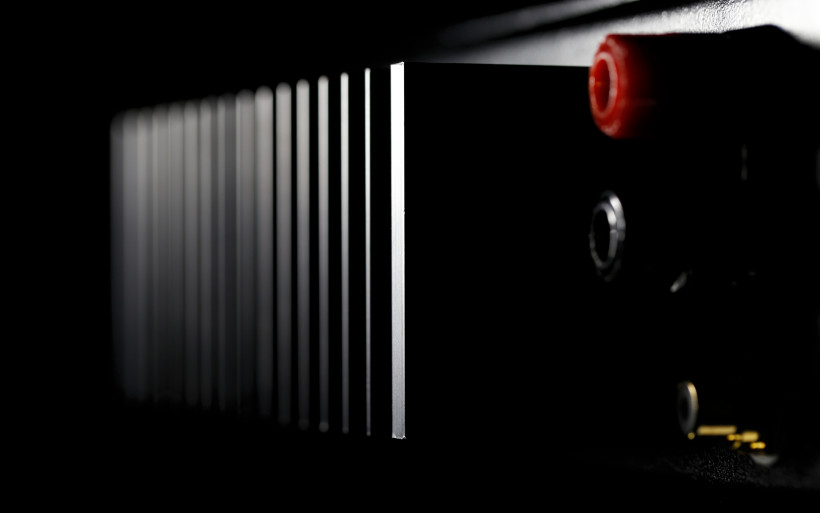 Next thing on a ‘to do’ list was to replace the Job 225 with Sanders Sound Systems Magtech power amplifier an witness what will happen, yet this manufacturer’s preamplifier remained untouched. American power amp does its job nicely with Swiss W8 floorstanders, it shows what these speakers really are. It’s hard to shake off the feeling that it doesn’t tweak any sound aspect, it just amplifies the signal received. When matched with a preamplifier from the same manufacturer, this machine is considered to be a transparent and a very decent performer. But when the Job 225 comes into play, things get more intense in an instant. This small Swiss deck sings faster, similarly smooth and airier. Magtech power amp’s approach is denser and calmer, with slightly lowered tonal balance. All details are there, yet the Job 225 fleshes these out more easily and it sounds more effortless overall. After several switches it became obvious that if more muscle tissue, less transparent and slightly slower yet gutsier approach is something one fancies, American deck is the way to go. Yet strictly subjectively speaking, the Job 225 represents more entertaining, airier and snappier approach. Yes, slightly less weighty, but very impressive as a package nonetheless. When both devices’ asking price is added to the mix ($1’699 vs $5’000), things become very interesting, don’t they?
Next thing on a ‘to do’ list was to replace the Job 225 with Sanders Sound Systems Magtech power amplifier an witness what will happen, yet this manufacturer’s preamplifier remained untouched. American power amp does its job nicely with Swiss W8 floorstanders, it shows what these speakers really are. It’s hard to shake off the feeling that it doesn’t tweak any sound aspect, it just amplifies the signal received. When matched with a preamplifier from the same manufacturer, this machine is considered to be a transparent and a very decent performer. But when the Job 225 comes into play, things get more intense in an instant. This small Swiss deck sings faster, similarly smooth and airier. Magtech power amp’s approach is denser and calmer, with slightly lowered tonal balance. All details are there, yet the Job 225 fleshes these out more easily and it sounds more effortless overall. After several switches it became obvious that if more muscle tissue, less transparent and slightly slower yet gutsier approach is something one fancies, American deck is the way to go. Yet strictly subjectively speaking, the Job 225 represents more entertaining, airier and snappier approach. Yes, slightly less weighty, but very impressive as a package nonetheless. When both devices’ asking price is added to the mix ($1’699 vs $5’000), things become very interesting, don’t they? It was high time to use the biggest guns; Trilogy 925 and LampizatOr Golden Gate. This setup was balanced, whereas Polish d/a converter and the Job 225 were connected via RCAs, with Sanders Sound Systems Magtech preamplifier between ’em. English integrated’s volume control can’t be bypassed, hence there was no option to make this fight more even. In any case, this review’s main dish started to fall a bit short here, which was somewhat expected. Trilogy 925 sang bigger, denser, bolder, a bit smoother and audibly gutsier. Said deck’s input is something Boenicke W8 speakers simply benefit from, it fits like a champ here. The Job 225 performed feistier again and audibly leaner, even with the American preamplifier’s input. Its soundstage was impressive nonetheless, W8s were sonically as big and present in the room as usual. The main difference was vividness, English integrated was able to paint bigger and more lifelike instruments. Despite of its more suave nature, it also had slightly tighter grip over lower FR parts than the Job 225. Yes, the former, even though it’s more calm nature, took care of bass department not only in fuller, but also punchier fashion. Yet what’s really surprising is that the latter amplifier sang very smoothly and delicately when needed. Both of these aspects are something Swiss deck shows very clearly.
It was high time to use the biggest guns; Trilogy 925 and LampizatOr Golden Gate. This setup was balanced, whereas Polish d/a converter and the Job 225 were connected via RCAs, with Sanders Sound Systems Magtech preamplifier between ’em. English integrated’s volume control can’t be bypassed, hence there was no option to make this fight more even. In any case, this review’s main dish started to fall a bit short here, which was somewhat expected. Trilogy 925 sang bigger, denser, bolder, a bit smoother and audibly gutsier. Said deck’s input is something Boenicke W8 speakers simply benefit from, it fits like a champ here. The Job 225 performed feistier again and audibly leaner, even with the American preamplifier’s input. Its soundstage was impressive nonetheless, W8s were sonically as big and present in the room as usual. The main difference was vividness, English integrated was able to paint bigger and more lifelike instruments. Despite of its more suave nature, it also had slightly tighter grip over lower FR parts than the Job 225. Yes, the former, even though it’s more calm nature, took care of bass department not only in fuller, but also punchier fashion. Yet what’s really surprising is that the latter amplifier sang very smoothly and delicately when needed. Both of these aspects are something Swiss deck shows very clearly. In the end, after taking into consideration what our Swiss amplifier was able to pull off in confrontation with seven times pricier English 925 model, it’s unwise to see it as a loser. This deck’s attitude, input and refinement is heard easily, that’s unquestionable. It simply delivers, period. Every product’s performance limit has to be somewhere and it’s amazing how high the Job 225’s pinnacle is. There’s no shame in falling behind my reference setup, it’s Boenicke W8 optimized. But to keep up with 925 this long, in fashion this good and for mere $1’699 is utterly impressive and remarkable achievement in this journalist’s book.
In the end, after taking into consideration what our Swiss amplifier was able to pull off in confrontation with seven times pricier English 925 model, it’s unwise to see it as a loser. This deck’s attitude, input and refinement is heard easily, that’s unquestionable. It simply delivers, period. Every product’s performance limit has to be somewhere and it’s amazing how high the Job 225’s pinnacle is. There’s no shame in falling behind my reference setup, it’s Boenicke W8 optimized. But to keep up with 925 this long, in fashion this good and for mere $1’699 is utterly impressive and remarkable achievement in this journalist’s book.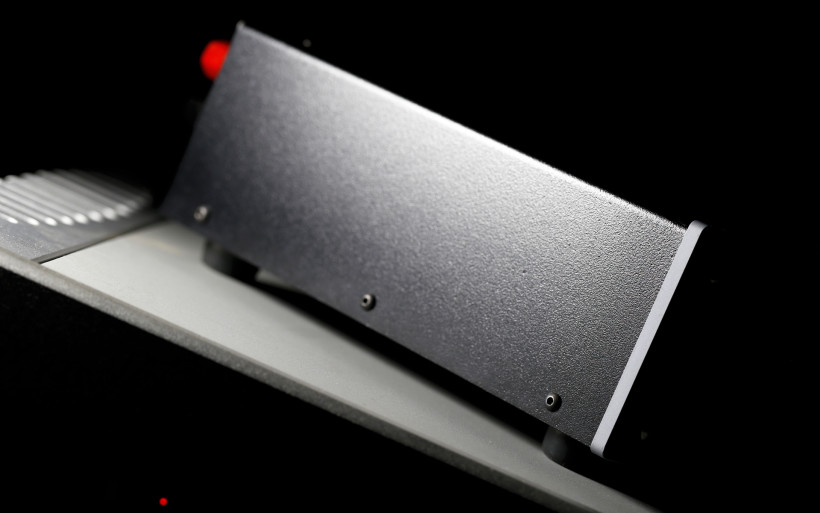 Past W8 experience, the only thing what’s left to do was to give Xavian’s Perla model a chance. To make it short, these Czech monitors, the Job 225 and Lumin T1 is a setup to get old with. Small, compact, classy looking and able to fill a whole room with very fast, generously clear, properly thick, marvelously textured and involving sound. Yes, the outcome is a bit fuzzy and condensed, but that’s Perla’s input. These speakers are a pleasure providers, their midrange is the foundation for everything else. But the most important thing here is that the Job 225 makes Czech monitors feistier, clearer and smoother than usual, yet leaves their character intact. There are no trade-offs, on the contrary to a grand synergy. Trilogy 925 paints bigger and thicker picture, with bolder, more effortlessly served and very organic instruments. But this time the winner wasn’t as obvious as with Boenicke W8 floorstanders. The quality gap diminished to mainly apples vs oranges scenario. All experiences described above lead to one simple observation. The Job 225 is the very real deal. Not only it performs like a champ, but also has a very strong, yet universal character. You can’t go wrong with this amplifier.
Past W8 experience, the only thing what’s left to do was to give Xavian’s Perla model a chance. To make it short, these Czech monitors, the Job 225 and Lumin T1 is a setup to get old with. Small, compact, classy looking and able to fill a whole room with very fast, generously clear, properly thick, marvelously textured and involving sound. Yes, the outcome is a bit fuzzy and condensed, but that’s Perla’s input. These speakers are a pleasure providers, their midrange is the foundation for everything else. But the most important thing here is that the Job 225 makes Czech monitors feistier, clearer and smoother than usual, yet leaves their character intact. There are no trade-offs, on the contrary to a grand synergy. Trilogy 925 paints bigger and thicker picture, with bolder, more effortlessly served and very organic instruments. But this time the winner wasn’t as obvious as with Boenicke W8 floorstanders. The quality gap diminished to mainly apples vs oranges scenario. All experiences described above lead to one simple observation. The Job 225 is the very real deal. Not only it performs like a champ, but also has a very strong, yet universal character. You can’t go wrong with this amplifier.
Summary
As a package, JOB Electronics Job 225 stereo power amplifier is stupendous, period. It’s high time to be amazed. Sound quality this deck represents is unbelievable, almost too good to be true and as it turns out, with not even one string attached. Strong words, eh? Rest assured that with said product, these fit like a glove. Not only Job 225 is the best among similar devices known to this reviewer, but also easily capable of throwing blows way above its price point. To compare it in poshier, blingier and times more expensive environment is to know. Realistically speaking, this deck’s competition starts at four times its coin, not earlier. Being fully aware of how serious this statement sounds, perhaps to gush over the Swiss-American brick this much is excessive. To some readers, perhaps I should’ve played it cooler. Yet after witnessing what Job 225 really is, descriptive measures toned down simply won’t grasp what needs to be grasped. Not this time, no.
It was highly entertaining when visually simple and minimalistic Job 225 turned out to be a performer this grand. In the very beginning of the Swiss-American ride, one can simply wonder how it’s even possible that a device this small can deliver sound this refined, transparent, fast, easygoing and complete. Yet it happened, Job 225’s appearance is the “hah, alright, you got me there!” factor and the fact that not too long ago said machine was sold e.g. via Amazon is yet another one. Not via posh audio stores where it surely fits, but Amazon. What’s even more amusing is the thought of audiophiles who, once stumbled upon a $1’699 Job 225 amplifier, won’t even bother to give two flying farts about it. Too affordable to get properly interested, too vanilla to take a closer look, eh? Their loss.
All things considered, this review’s outcome is painfully obvious. We have a winner as worthy of your interest and hard-earned dough as it gets. Or to put it in even simpler words, do yourself a favor and buy a Job 225, you’ll thank me later. Beautiful amplifiers of this sort simply don’t occur in the audio nature. This product stands as a contradiction to what it’s all about these days. This is the deck every enthusiast should have a listen to. My bet is that past short tête–à–tête with Job 225, majority of individuals will end up with an invoice request sent to JOB Electronics directly. Especially audio journalists, as this company’s Job 225 amplifier is not only a pleasure deliverer, but a perfect reality check tool as well, at this time worldwide available. ‘Till next time.
- Loudspeakers: Boenicke Audio W8, Xavian Perla
- Amplifiers: Trilogy 925, Firstwatt F7
- Digital source: Lampizator Golden Gate (WE101D-L + 5U4G Ltd. Ed.)
- Transport: Asus UX305LA, Lumin T1
- Interconnects: Forza AudioWorks Noir
- Speaker cable: Harmonix CS-120 Improved
- Power chords: Forza AudioWorks Noir Concept, Gigawatt LC-2 MK2
- Power delivery: Gigawatt PF-2 mk2
- Equipment racks: Lavardin K-Rak
- Music: NativeDSD
- Playback platform: Roon
Retail prices of reviewed components in EU (excl. tax):
- Job 225: €1’699
Manufacturer: JOB Electronics



